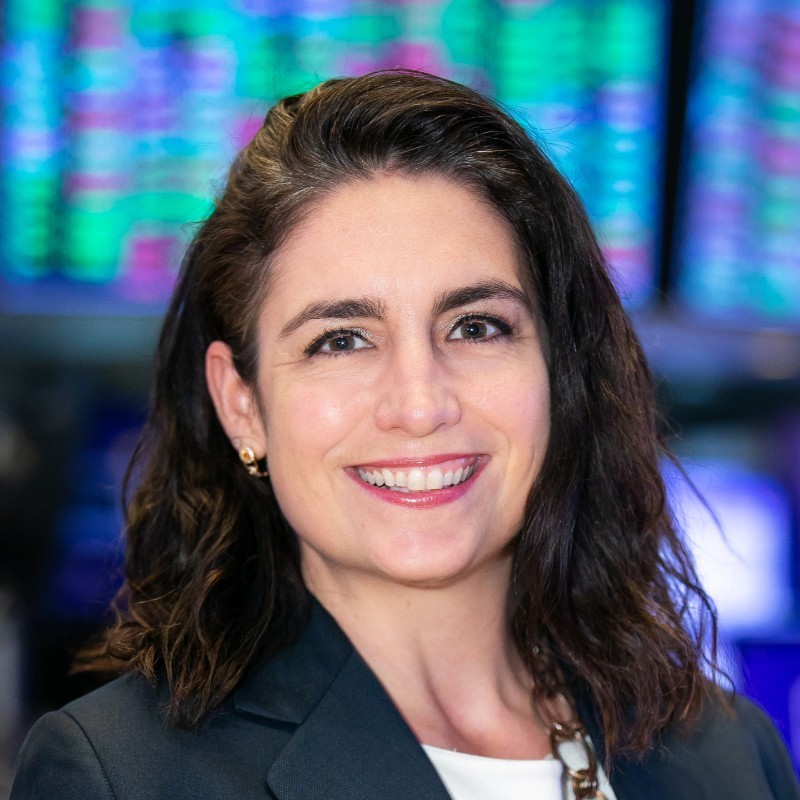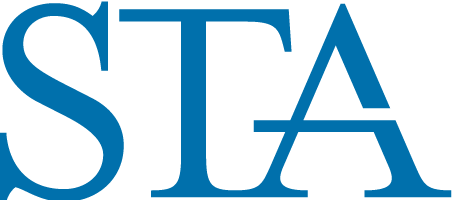To highlight the important work and impressive achievements of women in financial services, the STA Women in Finance Committee is pleased to highlight women from all areas of the industry who aim to inspire the next generation of women in finance.
This month, we’re highlighting the career of Meaghan Dugan, Head of Options at the New York Stock Exchange. In this role, she is responsible for oversight of the NYSE Amex Options and NYSE Arca Options markets. She leads competitive strategy and development as well as managing the NYSE Options team’s business strategy, including commercial incentive programs and market structure initiatives. Prior to joining the NYSE, Ms. Dugan spent 11 years at Bank of America, most recently as the Head of Product for US Electronic Options and Global Futures Algorithms. Prior to that, Ms. Dugan worked for Morgan Stanley, originally in San Francisco as a lead market maker in its Automated Market Making business, then later within MSET, an electronic trading team delivering trading algorithms and solutions to institutional and buy-side trading firms.
– Inessa Ruffman, STA WIF Chair
Head of Options

Why did you choose a career in the financial services industry? How did you get started?
The origin of my path to the financial services industry is unique. I went to school for culinary arts and endeavored to be a chef in San Francisco. As I was applying for culinary positions, I came across an open role at the Pacific Exchange, which is now known as NYSE Arca. My first impression of the trading floor was that it was a fast-moving, dynamic environment that dovetailed with my kitchen experience. From working as a chef, I possessed a profound sense of timing to ensure every component of the meal was synchronized. With this sense of timing, coupled with a strong background in math, I found the trading floor to be an attractive place.
As I started to better understand the industry, I fell in love with the work and continued to ask questions to seek clarity in the multifaceted trading environment. I remained curious and always willing to learn. Within a short time, I was hired by a market maker firm called Spear, Leeds & Kellogg (SLK), where I learned to clerk and later become an options market maker. During this time, Goldman Sachs purchased SLK and the company became SLK-Hull Derivatives. A few years later, Morgan Stanley arrived on the trading floor to establish a Lead Market Maker (LMM) specialist post. I was hired and became an LMM for 120 stocks within our post. At this time, the exchange shifted to a more electronic posture, and transitioned LMMs to be supported remotely. As part of that change, Morgan Stanley moved the team to NYC, and from there I was able to dive into a different part of the business. One area was on the single stock trading desk, where I would take large positions in sector-specific stocks with derivative positions.
Later in my career, I moved to the MSET (Morgan Stanley Electronic Trading) team, which provides algorithms to buy-side/institutional clients across equities, options and futures. While there, I transitioned to a client-facing role from a trading role and started to learn the client side of the business. I then joined Bank of America as it was establishing its options electronic offering and spent 11 years with the team managing the Option Router as well as the Global Futures Algorithms product.
How has the industry changed in the time that you’ve been part of it?
The options industry has changed dramatically since I started in 1999. A few significant shifts include exchanges demutualizing and becoming SROs; options trading in decimals (formerly they traded in fractions); and stocks being listed in multiple locations, meaning investors can trade QQQ on any market, while before they could only trade it in San Francisco. I have always loved being a part of the options industry because it is constantly evolving, especially with the creation and implementation of new technologies. From being on the trading floor, I could see firsthand how technology was quickly changing the way we approached trading.
Even today, I continue to hold a deep appreciation for technology. In general, the approach I have always taken is to stay curious when change is taking place and always volunteer to be a part of the strategy to discuss change. Because of these two traits, I have been able to fully work through the shifts that have affected the options industry and develop deep relationships with a wide variety of market participants, many of whom I am lucky to call friends.
What are you most proud of in your career and why?
Throughout my career, I have continuously strived to ask my managers and senior leaders what I could do to help and how I could get involved. Originally, this was for educational purposes, but as I moved along in my career it became increasingly important to always go the extra mile, ask questions, volunteer to help the teams and collaborate with neighboring teams. This yielded a much richer understanding of the financial services industry from all angles.
One of my primary goals in joining the NYSE was to seamlessly transition our two option exchanges to our internal trading system, known as Pillar. Pillar is our state-of-the-art, single-code-base and highly deterministic trading platform. I am extremely proud to have closely collaborated across all the NYSE teams and partnered with our members to successfully transition Arca Options to Pillar in July 2022. This was a major accomplishment as Arca is the number one exchange by multi-list market share for the last seven quarters in a row and counting! Pillar is the trading system for our five equity markets and now Arca Options as well. In October, we will complete our final migration of Amex Options to Pillar.
What are your hopes for the future of the industry?
The future of the financial services industry lies with the younger generation and new technologies. It is my hope that each of us who have been in the financial services industry will proactively support this younger generation through mentorship programs and/or organic connections to share our experiences. Along with that, technology will continue to play a major role in our industry. As such, we must support an integrated approach to learning the business as well as education on all kinds of technology as the younger generation begins to shape the future of our industry.
Do you have any words of wisdom for the next generation of women in finance?
Remember that throughout your career, you will grow personally and professionally. However, the trajectory will be at different times, and the balance between these two arenas will always shift. Be kind to yourself, because it is during these times that we grow the most. Other words of wisdom for the next generation of women: Do not be afraid to ask questions, stand up for what you want and always go the extra mile!
